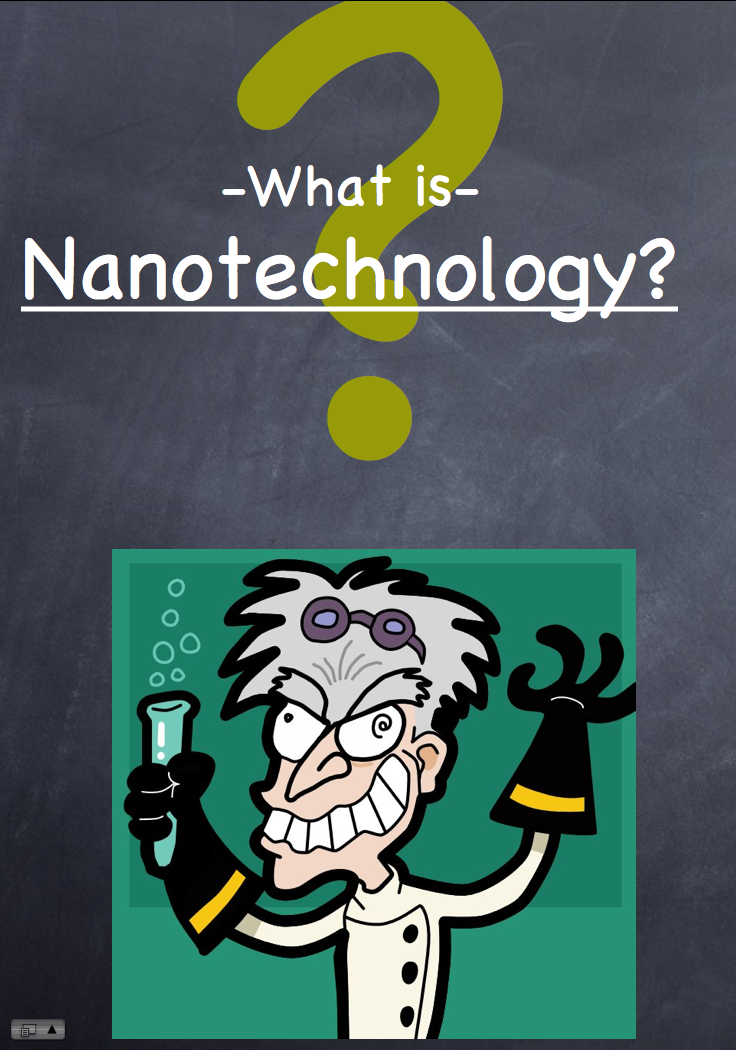DESCRIPTION
This is a stage presentation, designed for audiences of 11 and up, intended to give a broad overview and introduction to the subject of nanotechnology. The talk attempts to answer three basic questions about nanotech: How is It New, What Can It Do, and Do You Care?
DESCRIPTION
This is a stage presentation, designed for audiences of 11 and up, intended to give a broad overview and introduction to the subject of nanotechnology. The talk attempts to answer three basic questions about nanotech: How is It New, What Can It Do, and Do You Care?
TRAINING VIDEOS
OBJECTIVES
BIG IDEA
Nanotechnology is a new field of science, and can have some potentially huge applications.
LEARNING GOALS
Nano has allowed us to create some new materials.
Nano has been enabled by some new tools.
Nano has been promted by, and is prompting, some new ideas.
Nano has all sorts of cool applications, that may help us address some of the most pressing problems the world faces.
The biggest discoveries in nano are still ahead of us. Ultimately, we can learn a lot from living things.
NANO CONTENT MAP
Nanometer-sized things are very small, and often behave differently than larger things do.
Scientists and engineers have formed the interdisciplinary field of nanotechnology by investigating properties and manipulating matter at the nanoscale.
Nanoscience, nanotechnology, and nanoengineering lead to new knowledge and innovations that weren't possible before.
Nanotechnologies—and their costs, utility, risks, and benefits—are closely interconnected with society and with our values.
Credits
Museum of Science
Developed for the NISE Network with funding from the National Science Foundation under Award Numbers 0532536 and 0940143. Any opinions, findings, and conclusions or recommendations expressed in this product are those of the authors and do not necessarily reflect the views of the Foundation.
Creative Commons Attribution Non-Commercial Share Alike 3.0 United States (CC BY-NC-SA 3.0 US).
View more details

NISE Network products are developed through an iterative collaborative process that includes scientific review, peer review, and visitor evaluation in accordance with an inclusive audiences approach. Products are designed to be easily edited and adapted for different audiences under a Creative Commons Attribution Non-Commercial Share Alike license. To learn more, visit our Development Process page.

